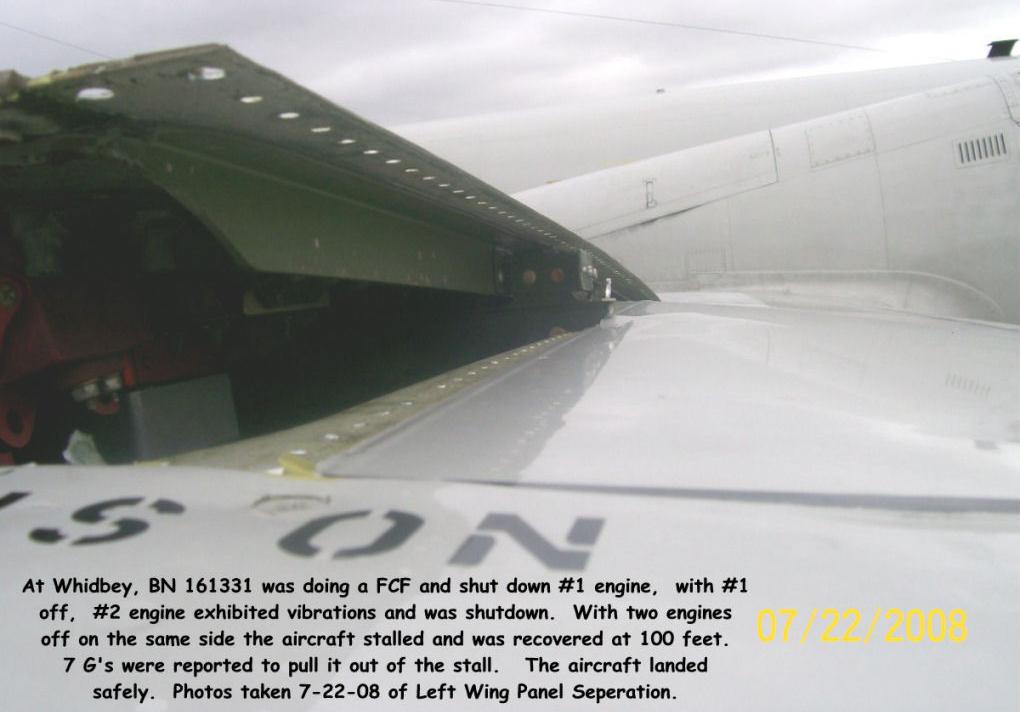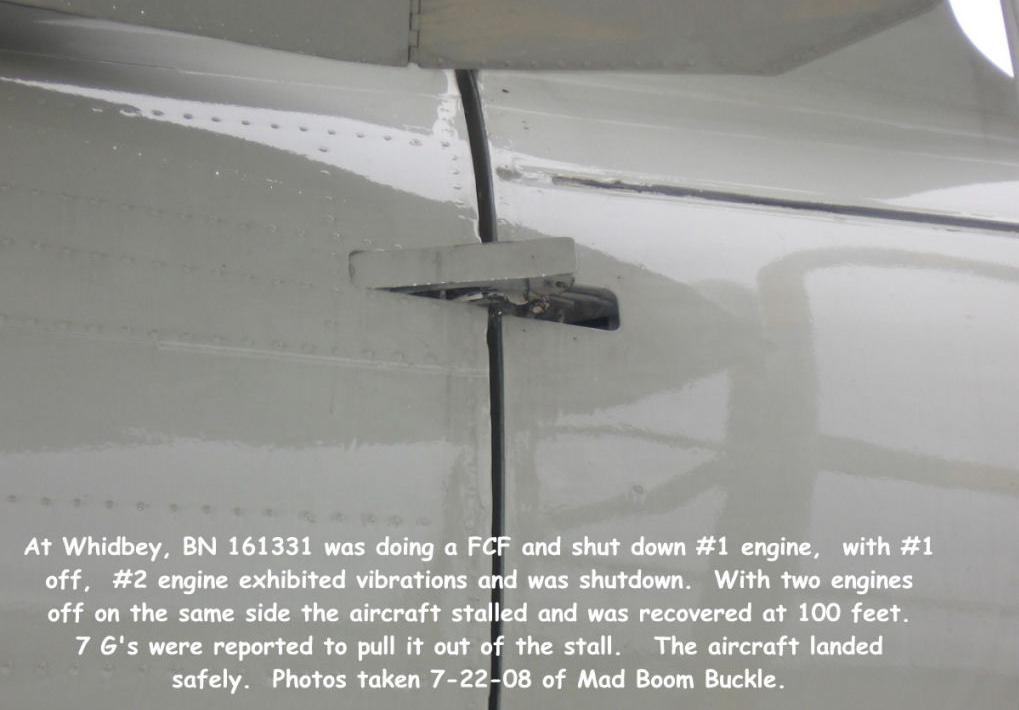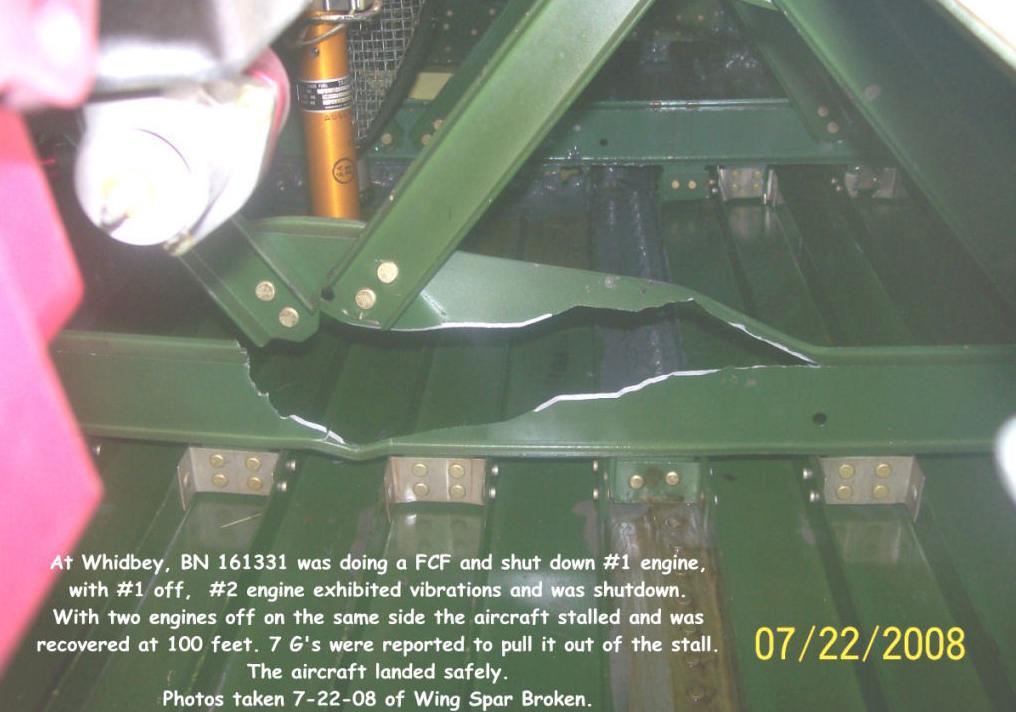P-3s were involved in six mishaps so far this fiscal year, according to Naval Safety Center spokeswoman April Phillips. Despite the fact that there were eight last year, all but one were Class C, the lowest level of mishap.When you read "discovered" - read "admitted to."
In each of three classes of mishaps, P-3 mishaps rates have increased during the past decade — from zero to 1.23 per 100,000 hours flown for Class A mishaps, and from zero to 1.23 per 100,000 hours flown for mishaps involving a serious injury or between $200,000 and $1 million in damages, know as Class B.
For Class C — mishaps involving $20,000 to $200,000 in damages — the rate has been higher than seven mishaps per 100,000 hours for four of the five most recent years. A decade ago, that rate was less than 4 per 100,000 hours flown.
In February, the Navy said it needed $548 million in extra fiscal 2009 funding to fix cracks in P-3 wings and to bolster research and development for its replacement, the P-8 multimission maritime aircraft, in hopes of moving up its arrival to the fleet. The funding was the No. 1 item in the Navy’s unfunded “wish list,” which reflects items not included in the service’s budget submission.
Navy spokesman Lt. Clayton Doss said the fact that the repair money wasn’t in the budget submission doesn’t mean the Navy is ignoring the problem. Repairs were put on the list, Doss said, because the budget already had been completed when the extent of the structural issues was discovered.
So, how does this play with the following? Heck, I don't know ... but if you connect the dots ...
....a Patrol Squadron 1 pilot lost control of a P-3 after an engine surged during a training exercise near Naval Air Station Whidbey Island, Wash.JOs are all over some boards with more info.
The aircraft dropped 5,500 feet, pulling 7 Gs before its pilot regained control less than 200 feet from the ground, according to the reports. The aircraft lost 45 rivets, broke a wing spar and bent its airframe; it landed safely at Whidbey with its crew unharmed.
They did five spin rotations from 5500 ft- - they bottomed out "between 50 and 200 ft"!! They could see the inside of the fuel tanks when they landed. I'll forward the pictures this evening.Yikes. We have lost aircraft before -- so it was most likely just the man-luck and aircraft-luck odds just met up in a way that the most important thing, the people, were able to walk away. Therefore, it was a good flight.
They were at 160 KIAS, appr flaps during a prop fails to feather drill on #1 when #2 started surging. They bagged #2, but while doing so got to 122 KIAS. When they added power, they were way below Vmcair, and departed. About a minute later, just before impact, they recovered.
...
The P-3C that almost went into Puget Sound waters a few days ago was from NAS Whidbey.
- It was a CPW-10 aircraft being operated by VP-1.
- Squadrons don't own aircraft any more.
- The P-3 fleet has so deteriorated because of under-funding and over-use that there are less than 100 still flyable*.
- The P-3s belong to the wing and are "lent to the squadrons on an as-needed" basis.
- The mission was a NATOPS pilot check, with a CPW-10 pilot (LT) aboard, a VP-1 LT and LTJG, plus VP-1 aircrewmen that included two flight engineers.
- The word is that the crew finally recovered control of the aircraft about 100 feet above MSL by pulling 7 Gs.
- The bird was landed back at NASW.
- Max damage was sustained by the aircraft, including almost tearing off a wing.
- Aircraft BuNo 161331.
- My first thought is that this was a Vmc incident:
- At Whidbey, P-3C 161331 was doing a Functional Check Flight.
- They shut down #1 engine.
- With #1 off, #2 engine exhibited vibrations and was shutdown.
- With two engines off on the same side the aircraft stalled.
- 7 G's were reported to pull it out of the stall.
- 45 consecutive rivets were pulled out on the stbd wing during the 7 G pull out (rolling pull), after peaking at negative 2.4g's as well.
- They did five spin rotations from 5500 ft -- they bottomed out "between 50 and 200 ft."
- They could see the inside of the fuel tanks when they landed.
- They were at 160 KIAS, appr flaps during a prop fails to feather drill on #1 when #2 started surging.
- They bagged #2, but while doing so got to 122 KIAS.
- When they added power, they were way below VMC air, and departed.
- SDRS recorded the flaps being raised and the landing gear being cycled down and then back up.
- Aircraft released all the fuel in tank #3 when it appears that the seam between planks 3 and 4 split.
- Tank #4 also lost its fuel load when plank #1 separated from rest of the aircraft wing."
AW1, here are the pics for 'ya!












No comments:
Post a Comment